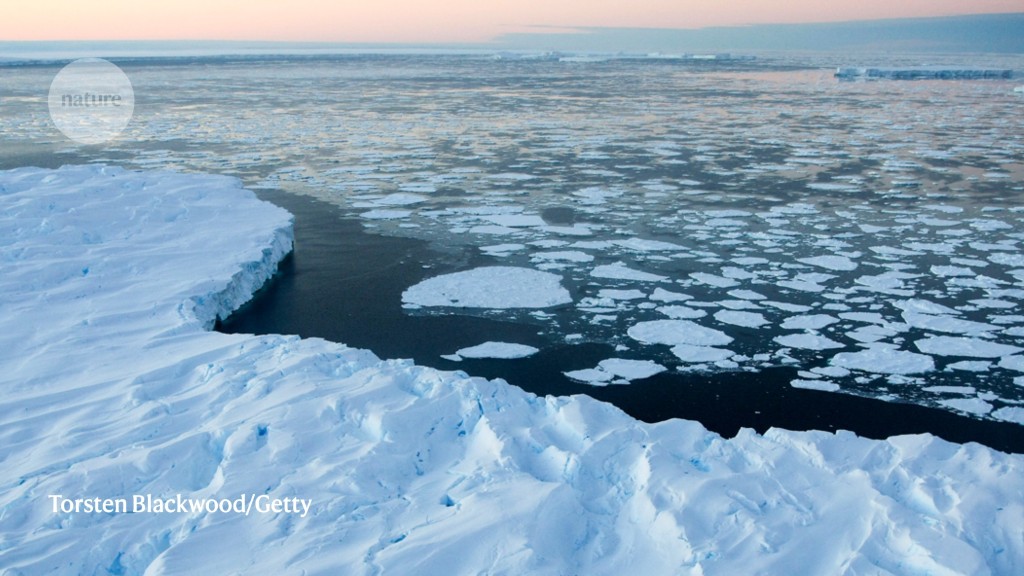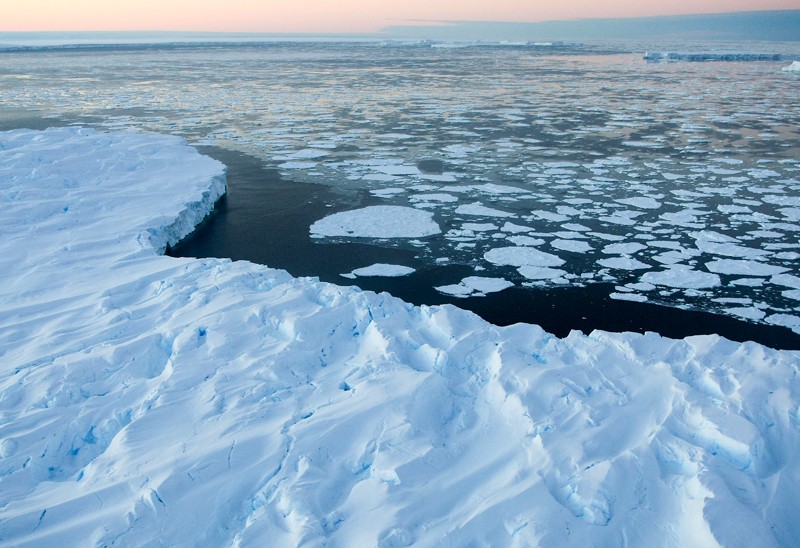Westerly winds are thrusting warm waters towards the East Antarctic ice sheet, and have thinned the region’s ice masses at alarming rates over recent decades, a study has found.
Scientists say that the research, published in Nature Climate Change1 on 2 August, also helps to resolve one of the largest uncertainties in projections of future sea-level rise: how vulnerable the East Antarctic Ice Sheet, the world’s largest, is to ocean warming.
Ice shelves float on the ocean, extending from and buttressing continental glaciers that amass to form ice sheets. Unlike ice masses in West Antarctica, which are melting at a staggering rate, the East Antarctic ice sheet was thought to be sheltered from ocean warming by cold, dense seawater that forms on the continental shelf, near ice shelves.
But over the past ten years, data and observations have shown that the East Antarctic ice sheet, too, is under increasing threat from warm salty water, which is melting ice shelves from beneath. Yet past studies have struggled to measure the extent of the warming and pinpoint the processes driving it.
Ninety years of data
Oceanographers Laura Herraiz-Borreguero at Australia’s national science agency, CSIRO, and Alberto Naveira Garabato at the University of Southampton, UK, sought to understand what is happening by collating and analysing publicly available records of ocean temperature and salinity, going back 90 years, along the East Antarctic continental slope and open ocean. They compared these oceanographic observations to satellite data used to map the boundaries of ocean currents.
The pair found that ocean temperatures in East Antarctica have risen by up to 2 ℃ since the early twentieth century, and the trend is accelerating. The rate of ocean warming in the region has tripled since the 1990s, they found, with the strongest warming occurring over the East Antarctic continental slope — near the glaciers whose protruding ice shelves have thinned or retreated most rapidly. Among these are the Denman, Vanderford and Totten glaciers. “It was really striking that the largest warming was in these areas where we know the ice sheet is losing ice mass,” says Herraiz-Borreguero.
Previous studies, which have recorded snapshots of warming at specific locations such as close to the Totten Glacier and Amery Ice Shelf2,3, have only hinted at the underlying processes driving ice melt in East Antarctica. For instance, some research has suggested that the warming might be linked to a southward migration of the Antarctic Circumpolar Current (ACC)4, which circulates eastward around the Antarctic continent, through the Southern Ocean.
Warming mechanism
The work by Herraiz-Borreguero and Naveira Garabato suggests that the southern edge of the ACC has indeed moved southwards, shunting warmer waters towards East Antarctica. But it also suggests that this expansion is driven by strong westerly winds that are also moving polewards in the summer months — a shift that is expected to persist throughout this century.
Understanding how these processes are driving Antarctic ice-mass loss at scale will help to resolve uncertainties in climate models that are trying to project how ice loss will contribute to future sea-level rise, says Herraiz-Borreguero.
The study draws on an impressive set of observations, which establishes a robust link between the observed warming, the processes driving that warming and ice-mass loss in East Antarctica, says Matthis Auger, a physical oceanographer at Sorbonne University in Paris. But he notes that other processes might also contribute to the warming. For instance, the inflow of fresh melt water from ice sheets5, as well as the upwelling of warm waters close to the Antarctic continent6, could exacerbate ice-mass loss by hindering the formation of cold, dense water that usually shields floating ice shelves, says Auger.
Little is known about changes in coastal waters abutting East Antarctic ice shelves, says Yoshihiro Nakayama, a physical oceanographer at Hokkaido University in Sapporo, Japan. East Antarctica is largely inaccessible compared with West Antarctica. As a result, most of the observations analysed in the study were collected only fairly recently — and from hundreds of kilometres offshore, not from waters on top of the continental shelf, where glaciers meet the sea forming ice shelves. “What matters for ice-shelf melting is the temperature right at the ice-shelf front,” Nakayama says. Collecting more observations of ocean conditions near ice shelves, and testing whether existing data fit with simulations generated by ocean models7, would help oceanographers to understand “what is really happening”, he adds.
The consequences of warmer waters lapping the continental shelf would be severe. If warm water is able to penetrate the continental shelf and heat glacial ice, which currently sits on bedrock below sea level, “then the ice melt would be almost unstoppable”, says Herraiz-Borreguero.








More News
Rat neurons repair mouse brains — and restore sense of smell
Transient loss of Polycomb components induces an epigenetic cancer fate – Nature
Retractions are part of science, but misconduct isn’t — lessons from a superconductivity lab